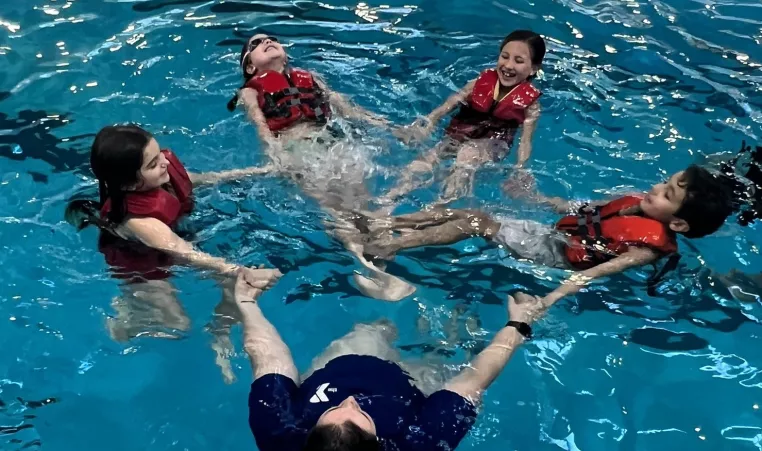Six Tips to Stay Water Safe

May is National Water Safety Month. When the weather starts to heat up, cool water starts calling - pools, lakes, oceans, rivers and more!
While swimming is fun, it is important to remember that water is a powerful force. We're sharing six tips to keep you and your family safe around water.
- Ask First
Make sure children know to always ask permission before going in or near the water. Teaching your children to be water smart is the first step in water safety – be sure they understand the importance of asking permission before going in or near the water.
- Bring a Buddy
Never swim alone without a water watcher. When children are swimming, make sure they are actively supervised at all times. Teach your children that they should only swim in locations where a lifeguard is on duty, or where a responsible adult agrees to watch the children in the water without distractions.
- Stay an Arm Away
Supervise your children whenever they’re in or near water. Whether it’s bath time or taking a dip in a pool or waterfront, make sure your children are within arm’s reach at all times.
- Don't Hold your Breath
Don’t engage in breath holding activities. Both adults and children should not hold their breath for a prolonged amount of time while swimming, as this can be dangerous.
- Life Vest is Best
Wear a life jacket. Inexperienced or non-swimmers should always wear a Coast Guard-approved life jacket while in or around the water.
- Reach, Throw, Don't Go!
Don’t jump in the water to save a friend who is struggling in deep water. If a loved one is struggling in deep water unexpectedly, your natural reaction may be to jump in the water to try and save them. Even the best swimmers can be overpowered by a panicked person, pulling the rescuer under water.
Our Safety Around Water program teaches the “reach, throw, don’t go” concept. Use a long object to reach for your loved one and pull them to safety. By using this technique, an adult or child can help a loved one without compromising their own safety.